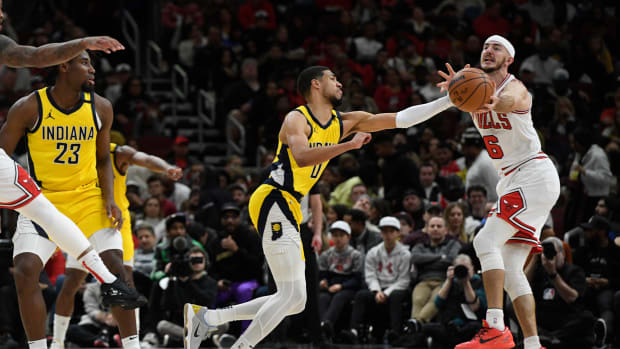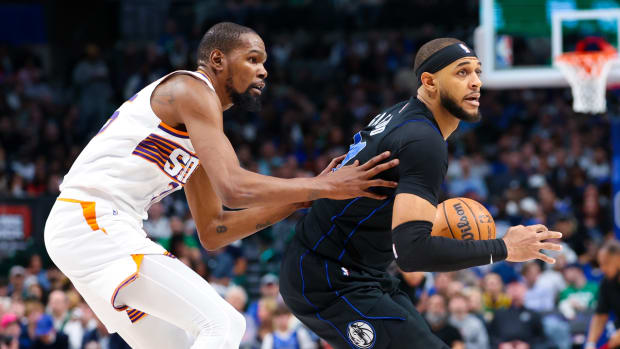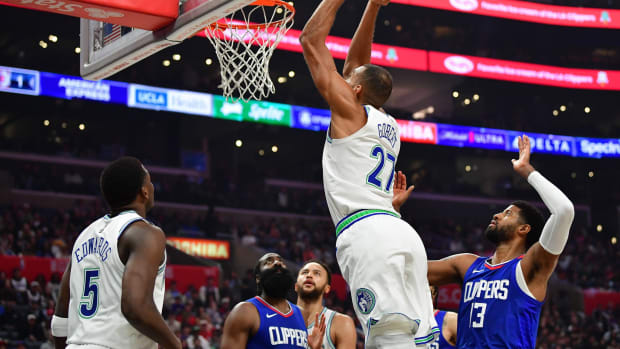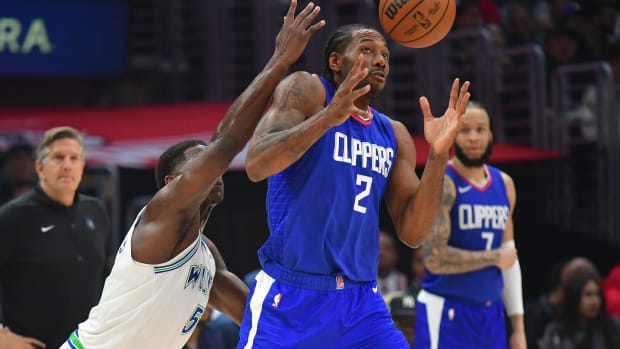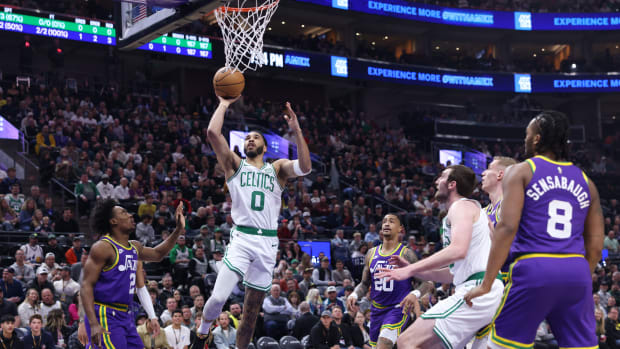Surveying the NBA Tank Race Post-Trade Deadline
The trade deadline came and went, the final stretch of the season is underway, and we’re still a few months from peak draft season. The decisions that teams make or don’t make at the deadline sometimes hint at what’s to come and sometimes have big implications with regard to the lottery itself. While last week’s major trades were star-centric and didn’t see any teams blatantly fling themselves into the void of losing, there’s still a lot left to chew on as it pertains to the 2023 draft. Here are my thoughts on what’s to come after stewing on all the moves that happened and didn’t happen, and a much-discussed potential tank race that never totally occurred—but may also still have some twists left.
— We got through October, November, December and basically January (when a minor trade between Boston and San Antonio took place) with no trades at all, which I inferred was a result of how tight the bottom of the standings were—there were a lot of teams hanging around down there. But it takes another level of commitment to go from being organically bad to engineering those losses. As a result of what was essentially a frozen trade period, some natural stratification occurred, and there are now four true frontrunners in the lottery sweepstakes. Over the last month or so, Houston, San Antonio, Charlotte and Detroit have distanced themselves from the pack with their continued losing. All four made minor deals at the deadline that either made themselves worse, acquired small long-term assets, or both. Local real estate experts in those markets should already be spamming Victor Wembanyama and Scoot Henderson with emails.
When you realize how far back (or ahead, depending on your lens) those four teams are from everybody else, it makes sense why fringe playoff teams like Chicago and Toronto avoided selling off parts. Even a perfectly executed plan for one of those teams likely wouldn’t lead to top-four draft odds—plus, the addition of the play-in tournament keeps the playoffs feasibly within reach if you close the season strong. So as far as the 2023 draft is concerned, I think what we primarily saw at the deadline was the really bad teams staying bad, and other current non-playoff teams deciding to kick the can down the road.
— That’s not to say we won’t see another wave of designed, late-season tanking: I cannot say exactly when or how this will take place, but the fifth- and sixth-worst teams still get 10.5% and 9% chances at the No. 1 pick, respectively, and reasonable if unlikely chances at moving into the top four. You look at Orlando and Indiana hovering in those spots, and you wonder how many of the teams currently projected in the mid-lottery ultimately veer off in the other direction—a strategy that, based on the prolific losing we saw late last season from the Pacers and Blazers, remains quite possible. Without getting overly speculative here, suffice it to say that random injuries and teams’ desire to hand minutes to young players can often lead to that type of outcome.
So while this may take another few weeks to manifest, and randomness plays a role, it shouldn’t be surprising if teams like the Wizards (who have to send their first-round pick to the Knicks if they make the playoffs), Blazers (who sold and got younger at the deadline), Jazz (who took a step in that direction by trading Mike Conley) or even the Thunder (who have been a fun watch of late) start to drift down the standings a little bit. The Lakers, who will likely cede their pick in a swap with the Pelicans, are obviously swimming against that tide, but we’ll see whether their deadline moves lead to treading water or produce real results in the right direction.
— With that in mind, I do think it’s important to understand the way NBA front offices seem to be viewing the shape of this draft: Beyond a very obvious No.1 pick in Victor Wembanyama and a strong No. 2 option in Scoot Henderson, I’ve heard a lot back from teams as to how relatively flat much of the first round appears to be—which is to say that there is not necessarily a whole lot of delineation between whichever prospect you want to argue for at No. 3 relative to maybe 10 or so players who will be picked immediately afterward. There are a few prospects who I think have separated themselves as strong candidates to go in the 3–5 range right now: Alabama wing Brandon Miller, Arkansas guard Anthony Black and Houston forward Jarace Walker. Beyond that, there’s a lot that still has to bear out.
Opinions obviously are going to vary widely from scout to scout, but I’ve generally heard agreement that the 11–20 range of this class projects as a pretty good place to find some value, due in part, again, to how relatively similar many of these players are in terms of ability and quality. Sometimes the prospects perceived as upside bets trickle upward, but in drafts like this, sometimes the higher-floor, lower-risk options rise to the top. For what it’s worth, as I’ve been putting together my own board, I find myself leaning toward the latter. And we saw only a couple of 2023 first-round picks change hands at the deadline: The Knicks (who figure to hang around the playoff picture, but also have first-round picks incoming from Dallas and potentially from Washington) sent a lottery-protected first and Cam Reddish to Portland for Josh Hart, and Phoenix sent its ’23 first-rounder to Brooklyn in the Kevin Durant trade.
Watch the NBA with fuboTV. Start your free trial today.
This is all to say that if my assessment of the talent gap (or lack thereof) holds through the end of college season, this might wind up as a tricky year to select in the lottery. In drafts like this, where so much evaluation of top prospects ultimately falls in the eye of the beholder, things like team fit may take more of a precedent, and there often winds up being less consensus. I’m objectively quite interested to see how this unfolds.
— Finally, just going to utter fair warning moving forward that the 2024 draft currently projects to be pretty bad. In my conversations with team personnel, there’s been little to no excitement to be found about that class, particularly the current class of high school seniors who will become next year’s one-and-done candidates. We’re about to hit a wave of drafts where a lot of young players lost significant amounts of key development time during the COVID-19 pandemic, and while it’s hard to say anything conclusive, it’s fair to wonder how much that played a role in producing what currently looks like it might be a series of somewhat down drafts in ’24 and possibly ’25, as well.
As a result, there’s also not much early consensus, if any, as to who the No. 1 pick should be: My favorite player in the class is USC-bound point guard Isaiah Collier, but it’s historically rare that guards who aren’t gifted with immense physical tools rise to the very top of the draft. There’s not another Wembanyama on the way, and how teams value their 2024 firsts moving forward will be an interesting subplot. The other thing to keep in mind is how the NBA ultimately decides to roll back the one-and-done rule and allow 18-year-olds back into the draft, a change that’s expected to come in collective bargaining but which also requires some strategic rollout to satisfy all parties between the league, its teams and the players association.
With that in mind, I’d expect all but the most incentivized (or desperate) teams to hold their far future firsts until that question gets resolved, as the prospect of a “double draft” that includes two years’ worth of high school prospects might ostensibly lead to a much stronger class. It feels like we’ve been talking about that forever, but I trust that someday we’ll get there, and for people who love the draft, it’ll be awesome. For teams, however, scouting twice as many teenage players will probably be total chaos. That scenario is still somewhere on the horizon.






























